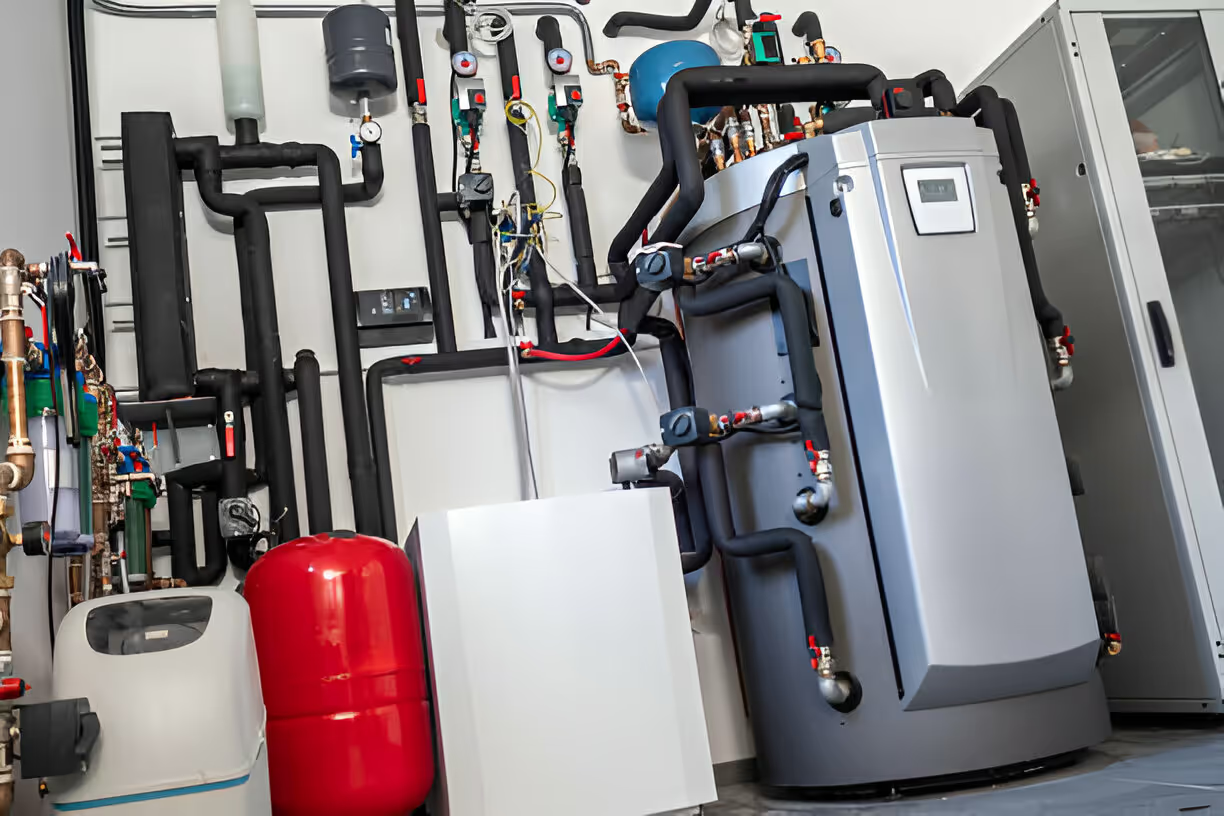Electric Furnaces in Tampa, FL


Why choose an electric furnace in Tampa, FL
- Electric furnaces provide safe, combustion-free heat, which is attractive in areas where gas lines are not present or homeowners prefer to avoid fossil fuel systems.
- For Tampa climates with short heating seasons, electric systems often deliver lower upfront costs and simpler service requirements than gas furnaces.
- Electric furnaces are compact and compatible with existing ducts and thermostats, making retrofits easier in many older homes around Tampa.
Common electric furnace services
- Professional installation and system selection
- Accurate sizing and load calculations for Tampa homes
- Routine maintenance and seasonal tune ups
- Diagnostics and same-day repairs for common faults
- Replacement and trade‑in options when systems reach end of life
- Energy-efficiency assessments and operating cost guidance
Proper sizing and system selection
Correct sizing is critical. Technicians perform a load calculation that considers:
- Home square footage and ceiling heights
- Insulation levels and window types
- Airtightness and ductwork condition
- Local Tampa climate factors such as mild winters and humidity
Oversized units cycle more and reduce comfort; undersized units struggle on cold nights. For Tampa homes, technicians often recommend sizing that prioritizes consistent, gentle heat and good airflow rather than maximum capacity.
Diagnostic process and typical repairs
Technicians follow a structured diagnostic workflow:
- Visual inspection of the furnace cabinet, electrical connections, elements, and control board
- Thermostat and sensor verification
- Measurement of voltages to heating elements and safety limit switches
- Ductwork and airflow assessment
- System performance check under load
Common repairs include:
- Replacing heating elements or relays
- Resetting or replacing limit switches and fuses
- Repairing wiring connections or control boards
- Fixing blower motor or capacitor issues
- Addressing airflow restrictions from clogged filters or ducts
Replacement, trade‑ins, and end-of-life indicators
Consider replacement when:
- The furnace is older than 15 to 20 years
- Repairs are frequent or costly
- Efficiency has significantly declined
- Safety components repeatedly fail
Trade‑in programs and equipment recycling are commonly available. Replacement planning includes evaluating duct compatibility, thermostat upgrades (programmable or smart), and whether a heat pump or hybrid system would better match Tampa’s heating and cooling balance.
Energy efficiency and operating cost considerations
- Electric resistance heat produces nearly 100 percent conversion of electricity to heat, but electricity cost per BTU can be higher than natural gas in many markets.
- In Tampa, because heating is used less often than cooling, total seasonal operating costs for electric furnaces can be competitive vs gas for some homes.
- Energy-saving strategies: tighten building envelope, upgrade insulation, use a programmable thermostat, and ensure ducts are sealed and insulated.
- Local utility incentives and energy-efficiency programs may reduce overall costs for high-efficiency equipment or heat pump alternatives.
Electric furnace versus gas heating and heat pumps
- Electric furnace pros: no combustion risks, simpler installation where gas is absent, lower initial equipment complexity.
- Electric furnace cons: potentially higher operating costs per hour of use compared with gas in some regions.
- Gas furnace pros: lower cost to operate where natural gas is available and cheaper; typically higher output for very cold climates.
- Heat pump alternative: for Tampa’s mild winter climate, a heat pump often delivers both heating and cooling with high seasonal efficiency, and can be more economical across the year than electric resistance heat.
Choosing between these options depends on current ductwork, fuel availability, existing equipment, and long-term energy goals.
Warranty, financing, and manufacturer support
- Manufacturer warranties for electric furnace components typically cover parts for several years; extended warranties and labor coverage are often available.
- Financing options and seasonal specials are commonly offered through local HVAC providers and lenders to spread installation cost over time.
- When evaluating offers, compare warranty lengths for parts and controls, what is excluded, and any service contract or maintenance requirements to keep warranties valid.
Brands we service
Most major residential electric furnace brands are supported, including but not limited to:
- Carrier, Trane, Lennox, Rheem, Goodman, Amana, Heil
Technicians are prepared to diagnose, repair, and replace equipment from the manufacturers commonly found in Tampa homes.
Typical timelines and what to expect
- Diagnostics and simple repairs: often completed same day or within 24 to 48 hours.
- Standard replacement or installation for a retrofit: commonly a one to two day process depending on ductwork and electrical updates required.
- New construction or major rework: timeline varies with permitting and construction schedules.
Pricing varies by home size, ductwork condition, electrical service capacity, and equipment selected; an on-site assessment provides accurate scope and estimate.
Common troubleshooting tips for homeowners
- Check the thermostat settings and batteries before assuming a furnace fault.
- Inspect and replace air filters regularly; restricted airflow is a leading cause of problems.
- Verify the circuit breaker and any inline fuses; some electric furnaces have service switches that may be off.
- Listen for unusual noises, which can indicate blower or element issues.
- If the system cycles rapidly or does not reach set temperature, document patterns and any error codes to share with a technician.
Routine maintenance recommendations
- Schedule an annual tune up before the heating season to check elements, safety controls, blowers, and electrical connections.
- Replace filters every 1 to 3 months depending on household conditions and filter type.
- Keep vents and returns clear of furniture and debris to ensure airflow.
- Inspect ducts periodically for leaks and gaps and consider duct sealing to improve efficiency.
For Tampa homeowners seeking dependable, low-maintenance heating, electric furnaces are a straightforward choice—especially where gas is not available or when minimizing combustion-related concerns matters. Proper sizing, seasonal maintenance, and timely repairs ensure reliable comfort through cool Tampa nights while helping control operating costs. Free estimates and professional assessments are standard practice to determine the best equipment and service plan for each home.
Service Areas


